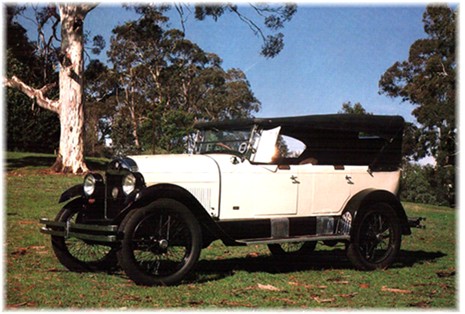The "Besst" Australian Car Ever Built
By AutoPuzzles Feature Writer Graham Clayton
1925 Besst. Click the Picture for a larger view.
The Besst car built
in
The idea for the
Besst originated with GM May, who was a principal of the May’s Motor Works in
Local body maker TJ Richards built the 5-seater touring body,
which was known as the “King of The Road”. The body was upholstered in the highest grade
leather, and included hand grips and double pockets on all side doors, as well
as outer and inner handles. Other features of the Besst included floor mats,
side curtain locker, wind deflectors, sun visor, Apco electric screenwiper,
Boyce motometer, robe rail and foot rest. There was no extra charge for the
magneto, while the features mentioned above were valued at 30
pounds.
The maker’s catalogue gave a gushing tribute to the car as
follows:
“In this new BESST are presented twin triumphs – in the art of
body building and in the science of automotive engineering. It brings pleased
satisfaction to the eye that scans its grace of body line and the soft dignity
imparted in its harmonising colours.
It brings complete satisfaction as you ride in it. Power is even,
flexible and plentiful. There is comfort in its spacious interior, in the
absence of road shocks which are absorbed in the cord oversize tyres and long
resilient springs and in the utter quiet of its
operation.
Drive one. A new appreciation of motoring ease and security awaits
you, no matter what cars you have been accustomed to
driving.”
The cost of the
Besst was 450 pounds. Here are the prices of some other 4 cylinder
Chevrolet Overland Model 91; 200
Pounds Rugby (Star) Model
F; 260 Pounds Dodge Series 116; 375
Pounds Morriss-London; 395 Pounds Hupmobile Series R; 475 Pounds
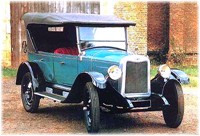
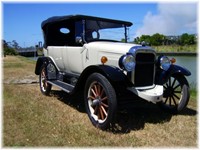
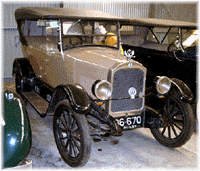
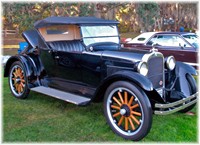
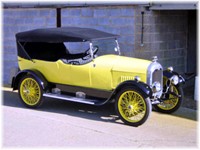
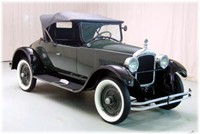
This list shows the main problem that all attempts at producing an
“Australian” car faced in the mid 1920’s – the cost of producing a car in
Australia, even when some or the majority of components were imported, was way
above the cost of a similar car fully imported from the United States. The Besst
was no exception.
From contemporary South Australian registration records, it
appears that only 6 Bessts were sold and registered for road use. The earliest
registration was in January 1926, while the latest was in June 1927. There is
only one surviving Besst today.
There is a slight mystery regarding the source of the chassis for
the Besst. It is believed that the chassis may have been the same as the 1922-23
Crow-Elkhart Model L-65.
As well as making
cars under its own name, Crow-Elkhart also sold chassis to other
“manufacturers”, who sold them under their own names. One of the other attempts
to produce an Australian car at the same time, the
Crow-Elkhart
chassis. May’s Motor Works has also been the South Australian agent for the
It seems that May had ordered a batch of chassis from Crow-Elkhart
just prior to the company going into liquidation in late 1922/early 1923. The
fact that the first Besst was not registered until early 1926 shows that the
company may have received the chassis in early 1924, and then needed 18 months
to build the bodies. It is not likely that plans for the production of the Besst
were made without some expectation of continuity of supply of the chassis.
Bibliography:
“South Australian
Motor Cars 1881….1942”, George Brooks and Ivan Hoffmann, Vinal Family
Publishing,
“Aussie Cars”, Tony Davis, Marque Publishing, Hurstville
1987
“Beaulieu
Encyclopedia of the Automobile”, Nick Georgano, Stationery Office,
“Standard Catalog of
American Cars: 1805-1942”, Beverly Rae Kimes and Henry Austin Clark Jnr,
3rd edition, Krause Publications,

